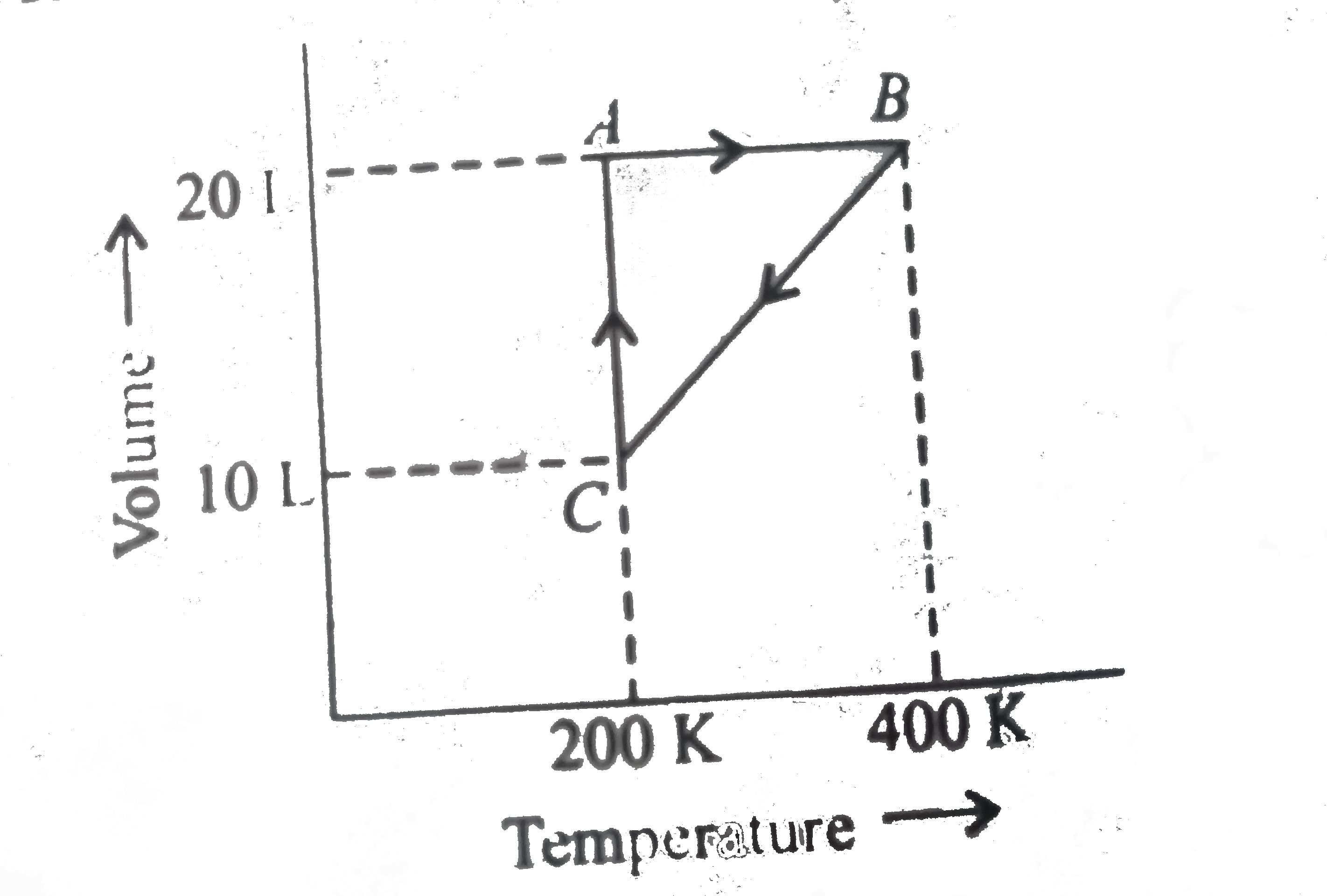There are two charges +1μC and−5μC under mutual coulombic interaction . The ratio of magnitude of forces acting on themwill be
1:5
1:1
5:1
1:25
The correct Answer is:2
To solve the problem of finding the ratio of the magnitudes of forces acting on two charges +1μC and −5μC under mutual Coulombic interaction, we can follow these steps:
Step 1: Identify the Charges
Let:
- q1=+1μC=+1×10−6C
- q2=−5μC=−5×10−6C
Step 2: Write the Expression for the Forces
According to Coulomb's law, the force between two point charges is given by:
F=k|q1q2|r2
where k=14πϵ0 is Coulomb's constant, |q1q2| is the product of the magnitudes of the charges, and r is the distance between the charges.
Step 3: Calculate the Forces
1. Force on charge q1 due to q2:
F12=k|q1q2|r2=k|(+1×10−6)(−5×10−6)|r2
F12=k5×10−12r2
2. Force on charge q2 due to q1:
F21=k|q1q2|r2=k|(−5×10−6)(+1×10−6)|r2
F21=k5×10−12r2
Step 4: Compare the Forces
From the calculations above, we see that:
F12=F21=k5×10−12r2
Thus, the magnitudes of the forces are equal.
Step 5: Calculate the Ratio of Forces
The ratio of the magnitudes of the forces acting on the charges is:
F12F21=k5×10−12r2k5×10−12r2=1
Final Answer
The ratio of the magnitudes of the forces acting on the two charges is:
Ratio=1:1
Let:
- q1=+1μC=+1×10−6C
- q2=−5μC=−5×10−6C
According to Coulomb's law, the force between two point charges is given by:
F=k|q1q2|r2
where k=14πϵ0 is Coulomb's constant, |q1q2| is the product of the magnitudes of the charges, and r is the distance between the charges.
1. Force on charge q1 due to q2:
F12=k|q1q2|r2=k|(+1×10−6)(−5×10−6)|r2
F12=k5×10−12r2
F21=k|q1q2|r2=k|(−5×10−6)(+1×10−6)|r2
F21=k5×10−12r2
From the calculations above, we see that:
F12=F21=k5×10−12r2
Thus, the magnitudes of the forces are equal.
The ratio of the magnitudes of the forces acting on the charges is:
F12F21=k5×10−12r2k5×10−12r2=1
The ratio of the magnitudes of the forces acting on the two charges is:
Ratio=1:1
Topper's Solved these Questions
- ELECTRIC CHARGES AND FIELDS BOOK - AAKASH INSTITUTE ENGLISHCHAPTER - ELECTRIC CHARGES AND FIELDS EXERCISE - SECTION-B(OBJECTIVE TYPE QUESTION( ONLY ONE ANSWER)
12 Videos
- ELECTRIC CHARGES AND FIELDS BOOK - AAKASH INSTITUTE ENGLISHCHAPTER - ELECTRIC CHARGES AND FIELDS EXERCISE - SECTION-C ( OBJECECTIVE TYPE QUESTIONS)
2 Videos
- ELECTRIC CHARGES AND FIELDS BOOK - AAKASH INSTITUTE ENGLISHCHAPTER - ELECTRIC CHARGES AND FIELDS EXERCISE - TRY YOURSELF
33 Videos
- DUAL NATURE OF RADIATION AND MATTER BOOK - AAKASH INSTITUTE ENGLISHCHAPTER - DUAL NATURE OF RADIATION AND MATTER EXERCISE - ASSIGNMENT (SECTION-D)
10 Videos
- ELECTROMAGNETIC INDUCTIONBOOK - AAKASH INSTITUTE ENGLISHCHAPTER - ELECTROMAGNETIC INDUCTIONEXERCISE - ASSIGNMENT(SECTION -D) Assertion-Reason type Question)
15 Videos
Similar Questions
Knowledge Check
Two tiny spheres carrying charges 1.8μCand2.8μC are located at 40 cm apart. The potential at the mid-point of the line joining the two charges is
A3.8×104VB2.1×105VC4.3×104VD6.3×105V
There are two charges +2μC and −3μC. The ratio of forces acting on them will be
(1) 2:3 (2) 1:1
(3) 3:2 (4) 4:9
View SolutionTwo forces of magnitudes 3N and 4N are acted on a body. The ratio of magnitude of minimum and maximum resultant force on the body is
View SolutionThree charges 2 μC , -4 μC and 8 μC are places at the three vertices of an equilateral triangle of side 10 cm. The potential at the centre of triangle is
View SolutionTwo point charges2μC and 8μC areplaced 12 cm apart. Find the position of the point where the electric field intensity will be zero.
View SolutionForces F1andF2 act on a point mass in two mutually perpendicular directions. The resultant force on the point mass will be
View SolutionForces F1andF2 act on a point mass in two mutually perpendicular directions. The resultant force on the point mass will be
View SolutionIf two identical spheres having charge 16μC and −8μC are kept at certain distance apart , then the force if F. They are touched and again kept at the same distance , the force becomes.
View Solution

